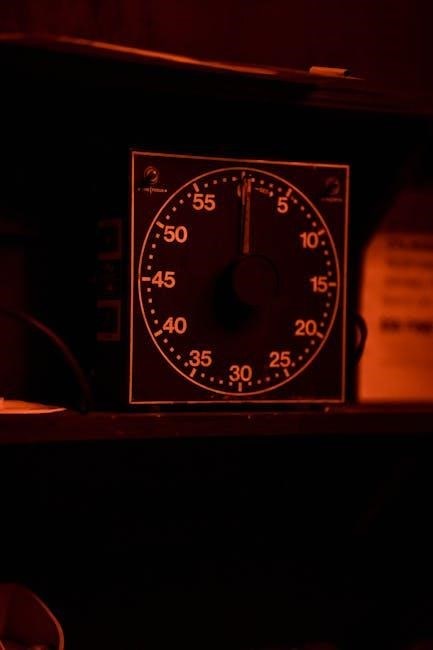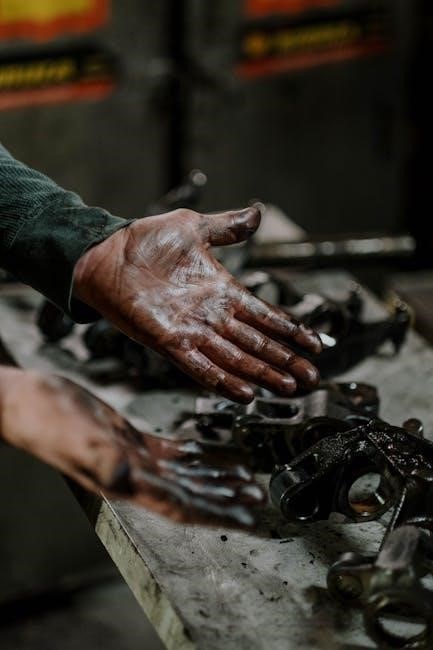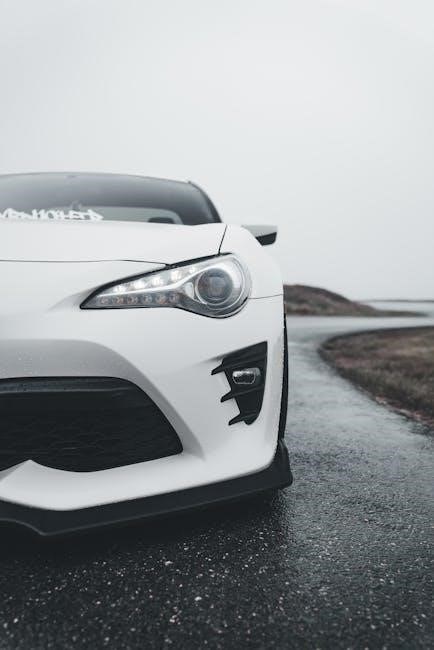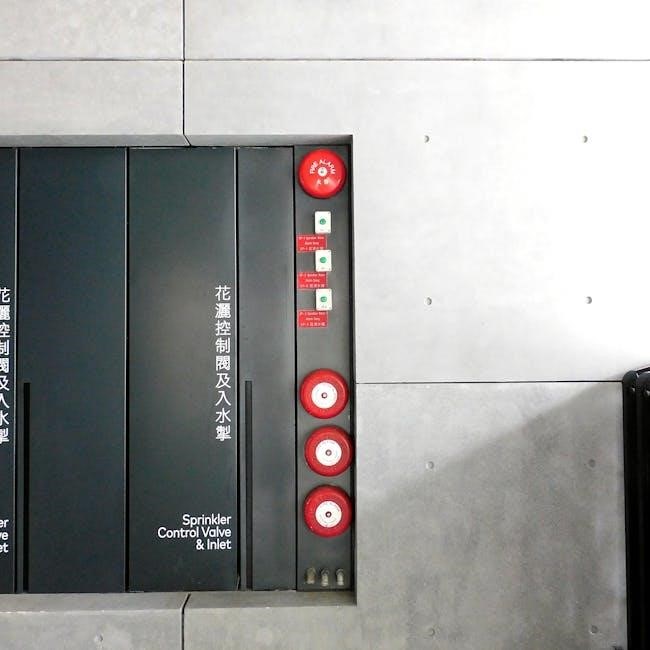Welcome to the Nostalgia Popcorn Maker, a kitchen essential that combines retro charm with modern convenience. This manual guides you through setup, operation, and maintenance for optimal use. Perfect for movie nights or snacks, it offers a fun and easy way to enjoy freshly popped popcorn. Designed with safety in mind, it ensures a delightful experience for all. Explore various models like RHP310 and RKP530, each crafted to deliver perfect popcorn every time.
1.1 Understanding the Nostalgia Brand
Nostalgia is a trusted brand specializing in retro-style kitchen appliances that blend classic designs with modern functionality. Known for their popcorn makers, Nostalgia offers a variety of models like the RHP310 and RKP530, each designed to evoke a sense of nostalgia while delivering high-quality performance. The brand focuses on user-friendly products, providing detailed manuals for easy operation and maintenance. With a commitment to innovation and customer satisfaction, Nostalgia ensures its appliances are both durable and easy to use, making them a favorite for home entertainment and everyday cooking. Their products are designed to bring back memories while enhancing your culinary experience.
1.2 Purpose of the Instruction Manual
This manual is designed to guide you through the safe and effective use of your Nostalgia Popcorn Maker. It provides step-by-step instructions for setup, operation, and maintenance, ensuring you get the most out of your appliance. The manual also includes essential safety precautions, troubleshooting tips, and warranty information. By following the guidelines outlined here, you can enjoy delicious homemade popcorn while maintaining the longevity of your machine. Whether you’re a first-time user or looking to enhance your experience, this manual is your comprehensive resource for optimal performance and satisfaction.
1.3 Safety Precautions and Warnings
Before using your Nostalgia Popcorn Maker, carefully read and follow all safety precautions to ensure safe operation. Never immerse the appliance in water or use it near water sources. Avoid using abrasive cleaners or scouring pads, as they may damage the surface. Keep the cord away from water and avoid overheating. Always use the correct power source and avoid overloading outlets. Supervise children during operation, and never leave the appliance unattended while in use. Adhering to these guidelines will help prevent accidents and ensure longevity of your popcorn maker;
Nostalgia Popcorn Maker Models
Nostalgia offers several popcorn maker models, including the RHP310 Retro Hot Air Popcorn Maker, RKP530 Retro Kettle Popcorn Maker, and RKP625. Each model combines retro styling with modern functionality, designed for easy use and delicious results. These models cater to different preferences, ensuring a perfect popcorn experience for every user.
2.1 RHP310 Retro Hot Air Popcorn Maker
The RHP310 Retro Hot Air Popcorn Maker is a compact and efficient appliance designed for quick popcorn preparation. Utilizing hot air technology, it pops kernels without oil, making it a healthier option. The retro design adds a nostalgic touch to any kitchen. Equipped with a clear lid, it allows users to monitor the popping process. Its compact size makes it ideal for small spaces, while its easy-to-use interface ensures hassle-free operation. Perfect for movie nights or snacks, the RHP310 is a reliable choice for homemade popcorn enthusiasts.
2.2 RKP530 Retro Kettle Popcorn Maker
The RKP530 Retro Kettle Popcorn Maker combines classic design with modern functionality, offering a nostalgic way to enjoy homemade popcorn. This kettle-style popcorn maker features a 2.5-ounce capacity, perfect for making larger batches. Its stainless steel kettle and stirring mechanism ensure even cooking and consistent results. The retro-inspired design adds a vintage charm to your kitchen, while its compact size makes it easy to store. Ideal for family gatherings or movie nights, the RKP530 is a reliable and easy-to-use appliance for creating delicious popcorn with minimal effort and cleanup.
2.3 RHP625 Retro Hot Air Popcorn Maker
The RHP625 Retro Hot Air Popcorn Maker is a versatile and efficient appliance designed for popcorn enthusiasts. Its retro 50’s-style design adds a nostalgic touch to any kitchen. This hot air popcorn maker operates without oil, making it a healthier option for homemade snacks. With a compact tabletop design, it’s perfect for small gatherings or family movie nights. The RHP625 features a large capacity, allowing you to make up to 6 quarts of popcorn in minutes. Its easy-to-use interface and automatic shut-off ensure safe and hassle-free operation. Cleaning is also simplified with its removable parts and dishwasher-safe components.

Unpacking and Initial Setup
Carefully unpack the popcorn maker, ensuring all components are included. Place it on a flat, stable surface near a power outlet. Read the manual before use.
3.1 Unpacking the Popcorn Maker
Carefully unpack the popcorn maker from its box, ensuring all components are included. Inspect for any damage and verify the contents match the manual. Place the unit on a flat, stable surface away from water sources. Ensure the power cord is accessible but not tangled. Avoid exposing the appliance to moisture or extreme temperatures. Keep the packaging materials for future storage or transport needs. Before first use, thoroughly review the manual to understand safety guidelines and operational procedures. This ensures safe and proper setup for optimal performance.
3.2 Placing the Popcorn Maker on a Flat Surface
Position the popcorn maker on a stable, flat surface, such as a countertop or table. Ensure the surface is heat-resistant and free from flammable materials. The appliance should be placed away from water sources, direct sunlight, and children’s reach. Avoid uneven or soft surfaces that may cause instability. The power cord should be kept away from hot surfaces and water to prevent damage or electrical hazards. Proper placement ensures safe operation and prevents accidents. Always follow the manual’s guidelines for placement to maintain safety and functionality. This setup ensures optimal performance and longevity of your popcorn maker.
3.3 Connecting the Popcorn Maker to a Power Source
Plug the popcorn maker into a grounded electrical outlet rated for 120V AC. Ensure the outlet is not damaged or overloaded. Avoid using frayed or damaged cords, as they may cause electrical hazards. Keep the power cord away from water and heat sources to prevent damage. If necessary, use a UL-rated extension cord. Never overload the outlet with multiple high-power appliances. Always refer to the manual for specific voltage requirements. Ensure the area around the power source is dry and clear of obstructions for safe operation. Proper electrical connection is crucial for optimal performance and safety.

Operating the Popcorn Maker
Plug in the popcorn maker, preheat it, and add kernels with oil. Monitor popping, listen for slowing sounds, then turn it off. Keep children away and never leave it unattended during use.
4.1 Adding Popcorn Kernels and Oil
To begin, measure the recommended amount of popcorn kernels and add them to the popping chamber. Lightly coat the kernels with oil to ensure even cooking and prevent burning. Use a mild oil like canola or vegetable oil for best results. Avoid overfilling the chamber, as this can lead to uneven popping. Gently pour the oil over the kernels, ensuring they are evenly coated. For optimal performance, use the measuring spoon provided or refer to the user manual for specific guidelines. Never add water, as this can damage the appliance or cause safety hazards. Keep the area clean and dry to prevent accidents. Once everything is prepared, proceed to the heating step. Always prioritize safety when handling hot appliances and electrical components. By following these steps, you can achieve perfectly popped popcorn every time.
4.2 Heating Up the Popcorn Maker
Plug in the popcorn maker and ensure it is placed on a stable, heat-resistant surface. Turn on the power switch and allow the unit to preheat for 2-3 minutes. The heating element will begin to warm up, preparing for the popping process. For models like the RHP310 and RKP530, the heating time may vary slightly. Always follow the manual’s guidelines for your specific model. Avoid touching the hot surfaces during this time. Once preheated, the maker is ready to start popping kernels. Never leave the appliance unattended while it is heating or in operation. Keep children away from the hot surfaces and electrical components. Ensure the area is clear of flammable materials and water sources to maintain safety. Proper preheating ensures optimal popping performance and prevents damage to the appliance. By following these steps, you can achieve perfectly popped popcorn every time.
4.3 Monitoring the Popping Process
Once the popcorn maker is heated, carefully pour the kernels into the popping chamber. Listen for the popping sounds to determine progress. For models like the RHP310 and RKP530, the popping cycle typically lasts 2-4 minutes. Ensure the lid is securely closed to contain popping kernels and prevent spills. Do not leave the appliance unattended during operation. If popping slows significantly, it indicates the cycle is nearly complete. Turn off the power and allow the maker to cool slightly before opening. Always keep children away from hot surfaces and electrical components. Refer to your specific model’s manual for precise timing and guidance.

Cleaning and Maintenance
Regular cleaning ensures optimal performance and longevity. Wipe the popcorn maker with a dry cloth after use, avoiding water and abrasive cleaners. Store properly when not in use.
5.1 Cleaning the Popcorn Maker After Use
Clean your Nostalgia Popcorn Maker immediately after use for optimal maintenance. Use a soft, dry cloth to wipe away any leftover popcorn, oil, or debris. Never immerse the appliance in water or use abrasive cleaners, as this may damage the finish or electrical components. For stubborn kernels, gently scrape them off with a plastic utensil. Avoid using scouring pads or harsh chemicals, as they can harm the surface. Regular wiping ensures hygiene and prevents residue buildup. Always unplug the machine before cleaning and store it in a dry place to maintain its performance and longevity.
5.2 Avoiding Water and Abrasive Cleaners
Never submerge the Nostalgia Popcorn Maker in water or expose it to excessive moisture, as this can damage electrical components. Avoid using abrasive cleaners, scouring pads, or harsh chemicals, as they may scratch the surface or harm the finish. Instead, clean gently with a soft, dry cloth to remove crumbs and residue. For tougher spots, lightly dampen the cloth with water, but ensure it is not soaking wet. This prevents rust and maintains the appliance’s integrity. Always unplug the machine before cleaning to ensure safety and longevity.
5.3 Storing the Popcorn Maker Properly
After cleaning and drying, store the Nostalgia Popcorn Maker in a cool, dry place away from direct sunlight. Ensure the appliance is unplugged and free from moisture. Avoid storing it near water sources or in humid environments, as this can damage electrical components. Use the original packaging or a protective cover to shield it from dust and scratches. Store any accessories separately to prevent loss or damage. Proper storage ensures the longevity and performance of your popcorn maker, keeping it ready for future use while maintaining its aesthetic appeal.

Troubleshooting Common Issues
This section addresses common issues like popcorn not popping, overheating, or power problems. Follow simple checks and maintenance tips to resolve these problems efficiently.
6.1 Popcorn Not Popping Properly
If your popcorn isn’t popping properly, check a few common issues. Ensure you’re using the correct type of popcorn kernels, as some are designed for specific makers. Verify the machine is preheated adequately before adding kernels. Overcrowding the popping chamber can also prevent proper popping—use the recommended amount. Additionally, check for blockages in the popping chute or vents. If issues persist, consult the user manual for model-specific troubleshooting tips to resolve the problem efficiently and enjoy perfectly popped popcorn.
6.2 Popcorn Maker Overheating
If your popcorn maker overheats, immediately turn it off and unplug it. Overheating can occur due to improper ventilation, blocked air vents, or excessive use without breaks. Ensure the machine is placed on a heat-resistant surface and kept away from flammable materials. Check for any blockages in the vents or popping chamber. Allow the unit to cool completely before restarting. Regular cleaning and proper maintenance can help prevent overheating issues. Always follow the user manual’s guidelines for safe operation and troubleshooting.
6.3 Power Issues and Electrical Problems
If your popcorn maker experiences power issues or electrical problems, first check the power cord for damage or tangles. Ensure the unit is plugged into a working outlet with the correct voltage rating. Avoid using extension cords, as they may cause voltage drops. If the machine stops working suddenly, unplug it and let it cool before restarting. Never immerse the popcorn maker in water or expose it to moisture, as this can cause electrical hazards. For persistent issues, consult the user manual or contact Nostalgia customer support for assistance. Always prioritize safety when troubleshooting electrical concerns.
Recipes and Seasoning Ideas
Explore delicious recipes like classic butter and salt, cheesy seasoning, or spicy variations to enhance your popcorn experience. Easy instructions and tips are included for perfect flavor. Enjoy experimenting with new seasonings and recipes to elevate snack time with your Nostalgia Popcorn Maker.
7.1 Classic Butter and Salt Popcorn
Transform your popcorn into a timeless treat with the classic butter and salt recipe. Melt 2 tablespoons of butter and lightly drizzle it over freshly popped popcorn. Sprinkle with salt to taste, ensuring even distribution. For extra flavor, add the butter and salt during the popping process. This simple yet delicious method brings out the natural sweetness of the popcorn while enhancing its texture. Perfect for movie nights or casual snacking, it’s a crowd-pleaser that requires minimal ingredients but delivers maximum flavor. Enjoy the nostalgic charm of homemade popcorn with this easy-to-follow recipe.
7.2 Cheese-Flavored Popcorn Seasoning
Elevate your popcorn experience with a cheesy twist! For a flavorful snack, sprinkle cheese seasoning over freshly popped popcorn while it’s warm. You can also add grated cheese or cheese powder during the popping process for an extra burst of flavor. Experiment with different types of cheese, such as cheddar or parmesan, to find your favorite. This simple yet delicious method enhances the natural taste of popcorn, creating a savory and addictive snack. Perfect for movie nights or gatherings, cheese-flavored popcorn is a crowd-pleaser that’s easy to customize to your taste preferences.
7.3 Spicy Popcorn Variations
Add a bold kick to your popcorn with spicy seasonings! For a fiery twist, sprinkle chili powder or cayenne pepper over freshly popped popcorn. You can also infuse heat by adding spicy seasonings like smoked paprika or chipotle powder during the popping process. For an extra zesty flavor, toss popcorn with a mixture of lime juice and diced jalapeños. Experiment with different spice blends to find your perfect level of heat. Whether you prefer mild or intense, spicy popcorn adds an exciting dimension to your snacking experience. Pair it with a cool drink for the ultimate balance of flavors!

Warranty and Customer Support
Nostalgia offers a limited warranty covering defects in materials and workmanship. For inquiries, contact customer service at www.nostalgiaelectrics.com or visit authorized service centers for assistance.
8.1 Understanding the Warranty Terms
Nostalgia popcorn makers are backed by a limited warranty covering defects in materials and workmanship for a specified period, typically one year from purchase. This warranty ensures repairs or replacements for faulty parts under normal use. For details, refer to the product manual or visit the official website. Proper registration and proof of purchase are required to activate warranty benefits. Exclusions may apply for misuse or unauthorized modifications. Understanding these terms ensures optimal protection and support for your appliance.
8.2 Contacting Nostalgia Customer Service
For assistance with your Nostalgia popcorn maker, contact customer service through their official website or by phone. Visit www.nostalgiaelectrics.com for support options, including FAQs and contact forms. You can also reach them at 1-800-250-8661 for inquiries or troubleshooting. Their team is available to address concerns, provide repair guidance, or help with warranty claims. Ensure to have your product model and serial number ready for efficient service. Nostalgia’s customer support is committed to resolving issues promptly and ensuring a positive ownership experience.
8.3 Finding Authorized Service Centers
To locate an authorized service center for your Nostalgia popcorn maker, visit their official website at www.nostalgiaelectrics.com. Use the “Service Center Locator” tool to find the nearest authorized center. You can also contact customer service at 1-800-250-8661 for assistance. Authorized centers ensure genuine parts and warranty compliance, providing reliable repairs. For international inquiries, refer to the website or contact Nostalgia’s corporate office at 1471 Partnership Dr, Green Bay, WI 54304-5685; Always verify authorization to maintain your product’s warranty and performance.

Environmental and Disposal Information
Dispose of your Nostalgia popcorn maker responsibly. Recycle electrical components and packaging to minimize environmental impact. Unplug and stop usage when not in use to reduce energy consumption.
9.1 Proper Disposal of the Popcorn Maker
Dispose of your Nostalgia Popcorn Maker responsibly to minimize environmental impact. Check local regulations for electronic waste disposal. Separate components like metal, plastic, and electrical parts. Recycle materials at authorized facilities. Do not dispose of the appliance in regular trash or near water sources. Avoid sending it to landfills, as it may contain hazardous materials. Proper recycling ensures safe handling of potentially harmful components. Follow community guidelines for appliance disposal to promote sustainability and reduce environmental harm. Always prioritize eco-friendly disposal methods for electrical appliances.
9.2 Recycling Guidelines for Electrical Appliances
Recycle your Nostalgia Popcorn Maker at authorized e-waste facilities to ensure eco-friendly disposal. Separate materials like metal, plastic, and electrical components for proper processing. Many communities offer drop-off locations for appliances, adhering to local regulations. Check with local authorities for guidelines on recycling electrical devices. Internal components may contain hazardous materials, requiring specialized handling. Participating in recycling programs helps conserve resources and reduce landfill waste. Always follow regional recycling standards to promote sustainability and protect the environment. Proper recycling supports responsible waste management and aligns with eco-conscious practices.
9.3 Reducing Energy Consumption
To reduce energy consumption while using your Nostalgia Popcorn Maker, always turn it off when not in use. Unplug the appliance to eliminate standby power consumption. Use a power strip to manage multiple kitchen devices, making it easier to switch them off. Opt for energy-efficient models like the RHP310 or RKP530, designed to minimize power usage. Measure ingredients accurately to avoid unnecessary heating cycles. Regular cleaning ensures optimal performance, reducing the need for extended operation. By following these practices, you can enjoy popcorn while keeping energy use minimal and environmentally friendly.

Additional Tips for Optimal Use
Experiment with flavored oils and seasonings for unique popcorn tastes. Lightly clean the maker after each use to prevent residue buildup. Store kernels in a cool, dry place for freshness. Preheat the maker before adding kernels for even popping. Avoid overfilling to ensure consistent results. Enjoy your popcorn with family and friends for a memorable snacking experience!
10.1 Using the Right Type of Popcorn Kernels
For optimal results, use high-quality popcorn kernels specifically designed for popcorn makers. Freshness is key—store kernels in a cool, dry place to preserve moisture. Avoid old or stale kernels, as they may not pop evenly. Choose kernels suited to your maker’s type, such as butterfly or mushroom kernels for different textures. Experiment with flavored or specialty kernels for unique tastes. Proper kernel selection ensures maximum popping efficiency and delicious results. Always follow storage tips to maintain kernel freshness and performance.
10.2 Avoiding Overcrowding the Popcorn Maker
Avoid overcrowding the popcorn maker to ensure even popping and prevent kernel waste. Overcrowding can lead to uneven cooking, with some kernels under-popping or burning. Use the recommended amount of kernels specified in your manual to avoid this issue. For larger batches, cook in multiple sessions to maintain quality. Properly measure kernels to ensure optimal performance and flavor. Overcrowding can also reduce airflow, affecting the popping efficiency. By adhering to the guidelines, you can achieve perfectly popped popcorn every time and extend the lifespan of your maker.
10.3 Enhancing the Popcorn Experience
To enhance your popcorn experience, experiment with diverse seasonings like cheese, herbs, or spices for unique flavors. Use high-quality popcorn kernels for better taste and texture. Lightly drizzle with oil after popping for even seasoning distribution. For a gourmet touch, add a sprinkle of grated Parmesan or a pinch of smoked paprika. Timing is key—monitor the popping cycle to avoid burnt kernels. Consider pairing your popcorn with dips or toppings like caramel or chocolate for a sweet twist. Explore various recipes and flavor combinations to elevate your snacking enjoyment and create memorable moments with family and friends.


























































